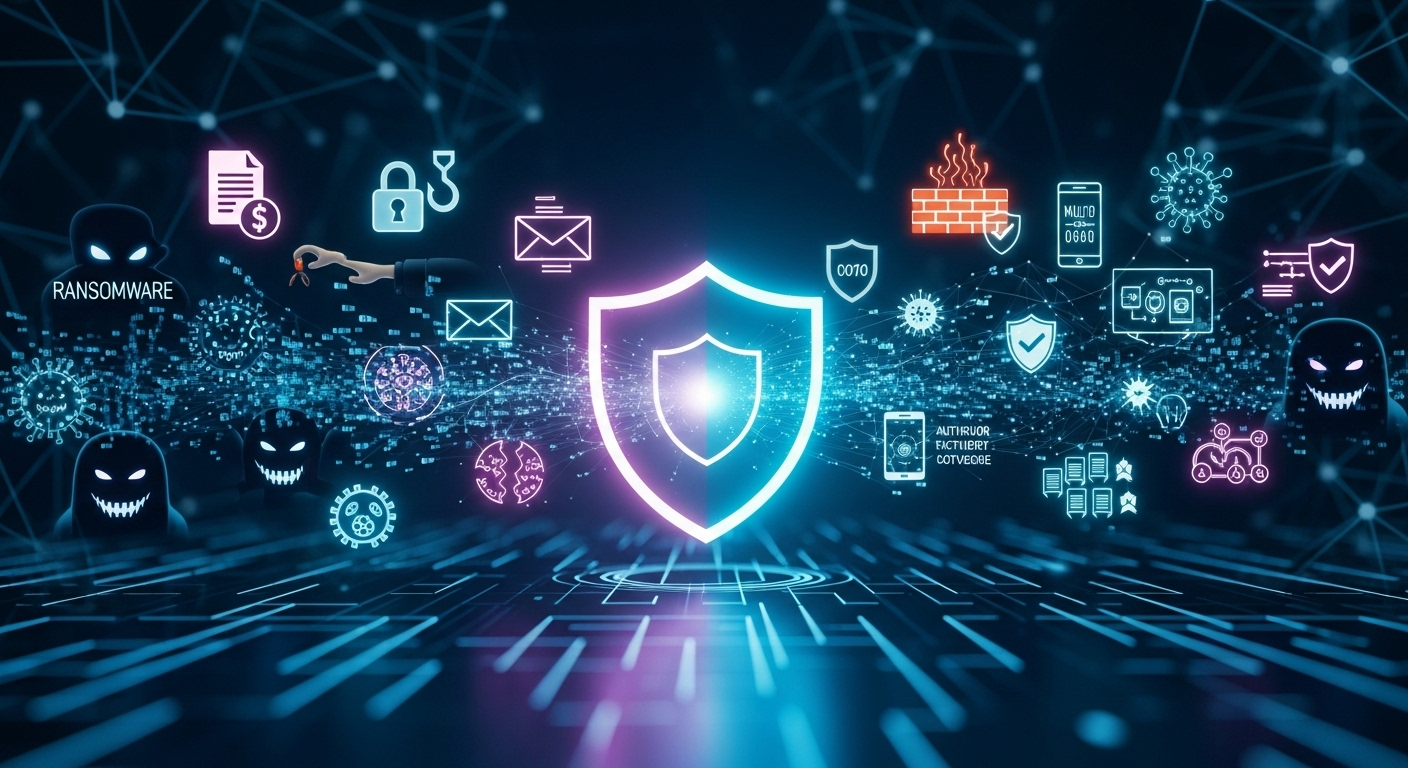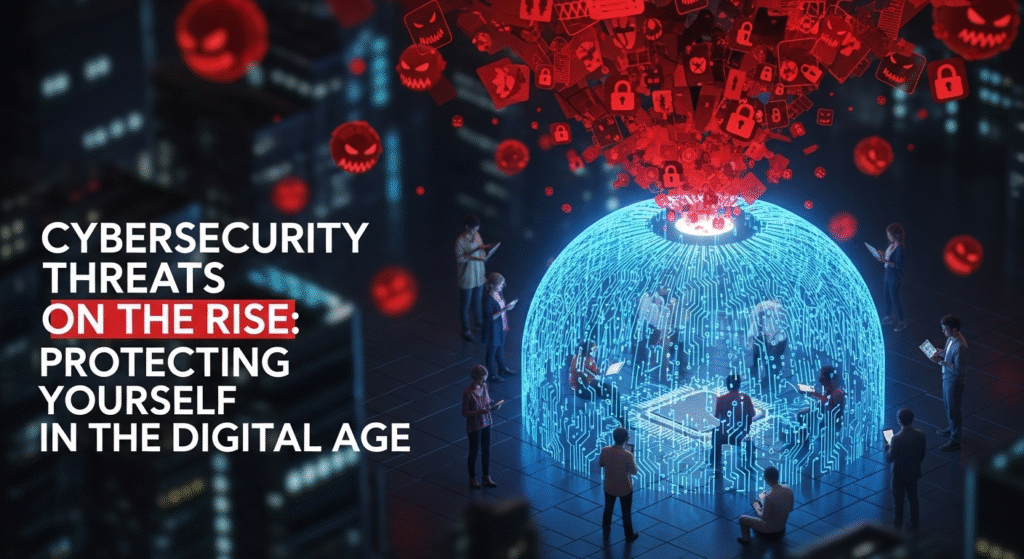Okay, let’s be real. Cybersecurity. It sounds like something out of a sci-fi movie, right? Lasers, glowing screens, and hackers in hoodies. But the truth is, it’s a very real, and frankly, increasingly urgent issue for everyone. Not just tech companies or governments. You, me, your grandma who just discovered Facebook – all of us are potential targets. And the bad guys? They’re getting smarter, more sophisticated, and frankly, bolder. I initially thought it was just large organizations that were being targeted, but after seeing what some close friends have gone through, I realized that is not the case. So, let’s dive in, shall we?
Why the Sudden Spike in Cybercrime?

You might be wondering, “Why are cybersecurity threats on the rise now?” Good question! There isn’t one single answer, but rather a confluence of factors. First off, the internet is, well, bigger than ever. More devices, more users, more data floating around. It’s a bigger playground for the bad actors. Think of it like this: If you dropped a small number of fish into the ocean, chances are some of them will live, but if you dumped all the fish in the world in the ocean, it’ll be every creature for themselves. And these are the times we live in. More opportunity means more crime. Secondly, the technology available to cybercriminals is becoming more advanced. Things like AI-powered phishing scams are becoming increasingly sophisticated and difficult to spot. Phishing scams in the past were poorly written, but these days they are almost indistinguishable from an email you would get from someone you know.
But it’s not just technology. The rise of cryptocurrencies has also played a role. Cryptocurrencies provide a relatively anonymous way to conduct financial transactions, making it harder for law enforcement to track down cybercriminals. I’ve got to admit, the whole crypto world still feels a little like the Wild West to me. The frustrating thing about all of this is that it’s a constantly evolving landscape. What’s considered safe today might be vulnerable tomorrow. It feels like a never-ending game of cat and mouse.
Common Cybersecurity Threats: What to Watch Out For
So, what are these threats we’re talking about? Let’s break down some of the most common ones. First, you have phishing scams. These are emails, text messages, or even phone calls that try to trick you into giving up personal information, like passwords or credit card numbers. The classic example is an email claiming to be from your bank, asking you to verify your account details. Don’t fall for it! Always go directly to the source. For example, if you get a suspicious email from your bank, call them, do not follow the link in the email.
Then there’s malware. This is malicious software that can infect your computer or mobile device, often without you even knowing it. Malware can do all sorts of nasty things, from stealing your data to holding your computer hostage for ransom (ransomware). But a lot of the time, ransomware works due to human error. You might be tempted to visit websites such as Poki at work, but these could allow for access of malware to your work computers.
And let’s not forget about weak passwords. I know, I know, it’s a pain to create and remember strong passwords for every single account. But trust me, it’s worth the effort. Using the same password for multiple accounts, or using easy-to-guess passwords like “password123” is like leaving your front door wide open for burglars. Speaking of which, check out this post if you are looking for more information on security.
Protecting Yourself: Simple Steps You Can Take
Okay, enough doom and gloom. What can you actually do to protect yourself? Fortunately, there are several simple steps you can take to significantly reduce your risk. First and foremost: use strong, unique passwords for every account. Consider using a password manager to help you generate and store these passwords securely. It’s like having a digital safe for your digital life.
Next, enable two-factor authentication (2FA) whenever possible. 2FA adds an extra layer of security to your accounts, requiring you to enter a code from your phone or email in addition to your password. Think of it as a second lock on your front door. And be careful when surfing the web. In this modern age, you must practice safe browsing. Always make sure websites are legitimate before entering any personal information. Check for the “https” in the website address and look for the padlock icon in your browser.
And finally, keep your software up to date. Software updates often include security patches that fix vulnerabilities that cybercriminals could exploit. Ignoring these updates is like ignoring a leaky roof – it’s only a matter of time before the damage gets worse.
The Human Element: Staying Vigilant
Here’s the thing: no matter how sophisticated your security software is, the weakest link in the chain is often the human element. Cybercriminals are masters of social engineering, meaning they are skilled at manipulating people into giving up information or taking actions they shouldn’t. Be skeptical of unsolicited emails or phone calls, especially if they ask for personal information or pressure you to act quickly. Think before you click! I keep coming back to this point because it’s crucial.
And it is not just about the emails that you see, sometimes even texts can compromise your information. For example, I’ve recently received texts asking me to fill out surveys with fake phone numbers that look like my friends’. The reality is that staying vigilant is a key component of cybersecurity.
FAQ: Cybersecurity Threats and Your Protection
How do I know if my email has been hacked?
That’s a scary thought! Some signs include password change notifications you didn’t initiate, unusual activity in your sent items (like emails you didn’t send), or if friends tell you they’re receiving strange messages from you. If you suspect your email has been compromised, immediately change your password (to a strong one!) and enable two-factor authentication. You can also run a scan of your computer with antivirus software to check for any malware that may have been installed.
What should I do if I accidentally clicked on a phishing link?
Don’t panic! The first thing to do is disconnect your device from the internet to prevent any further data from being sent to the attacker. Then, run a full scan of your computer with your antivirus software. Change your passwords for any accounts you may have entered on the fake website. And finally, monitor your bank accounts and credit reports for any signs of fraudulent activity. Report the phishing attempt to the relevant authorities (like the FTC in the US).
Is my phone as vulnerable to cyberattacks as my computer?
Yes, absolutely! Smartphones are essentially pocket computers, and they are just as vulnerable to malware, phishing scams, and other cyber threats. In fact, they can be even more vulnerable because people often use them on public Wi-Fi networks, which are often unsecured. Be sure to keep your phone’s operating system and apps up to date, use a strong passcode, and be wary of suspicious links and attachments.
Why does it seem like cybersecurity is only a problem for big companies?
While big companies are often the targets of high-profile cyberattacks, the reality is that individuals are at risk too. Cybercriminals often target individuals because they are easier to compromise than large organizations with sophisticated security systems. Plus, individuals’ personal information can be valuable for identity theft, financial fraud, and other malicious purposes. Don’t assume you’re too small to be a target. Remember, even one compromised account can cause significant damage.
So, there you have it. A whirlwind tour of the world of cybersecurity threats and how to protect yourself. It can all seem a little overwhelming, I know. But the important thing is to take it one step at a time. Start with the basics: strong passwords, two-factor authentication, and a healthy dose of skepticism. Stay vigilant, stay informed, and stay safe out there in the digital world. You might be surprised, you could get targeted like some people searching for this have experienced. It’s a jungle out there!



